SEQUOIA (Day 4 - part 1)
We started out the day by heading into Sequoia National Park. Our first stop was the Sherman Tree Trail. The trail leads into what is called the Giant Forest. Based on the size of the trees, this area seems to provide the best habitat for sequoias to grow. It covers three square miles and is the second largest sequoia grove in both area and number of sequoias.
Upon entering this grove in 1873, John Muir (a Scottish-American naturalist) described it as: A magnificent growth of giants... one naturally walked softly and awe-stricken among them. I wandered on, meeting nobler trees where all are noble... this part of the Sequoia belt seemed to me the finest, and I then named it "Giant Forest."


Heading into the tall trees

A pair of startled Mule Deer


It's amazing that something so little can grow into something so big... well, not specifically THIS one since it's made out of metal.


Gorgeous bark!
And then we saw it... the General Sherman, the biggest tree on Earth! Sure, there are trees that are taller and some that are bigger around, but no tree has greater mass. The tree got its name in 1879 by pioneer cattleman and former soldier James Wolverton, after the leader he served during the Civil War.

You have to be this far away to be able to fit the whole thing in the camera frame! The top of the tree is dead so it no longer gets taller, but each year it grows wider.
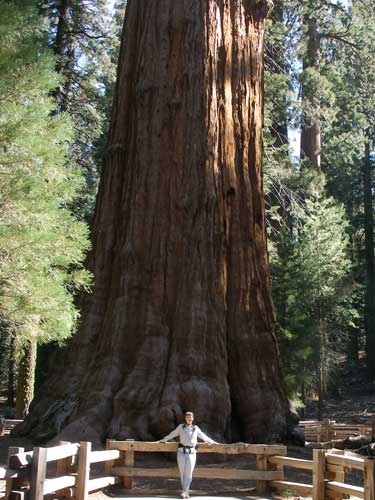
It has a height of 275 feet (equal to a 14-story building) and weighs over 6,000 tons. Each year, the tree adds enough wood to make a regular 60-foot tall tree.

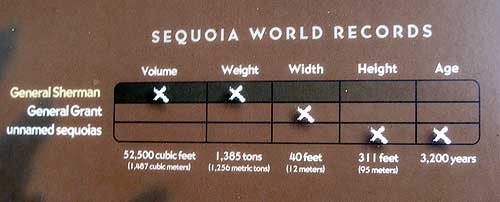
The tree, at 2,200 years of age, is about 1,000 years younger than the oldest-known sequoia. Location is more important than time in terms of size. One sequoia that grew in a terrible location got a circumference no bigger than the size of a quarter coin in the span of 100 years.

Looking up at the General Sherman for a 6-foot-tall person is about the same as a mouse looking up at that same person.

In 2006, the second-largest branch fell off. No one witnessed it so thankfully only some fencing and pavement got crushed.
We turned and followed the Congress Trail.
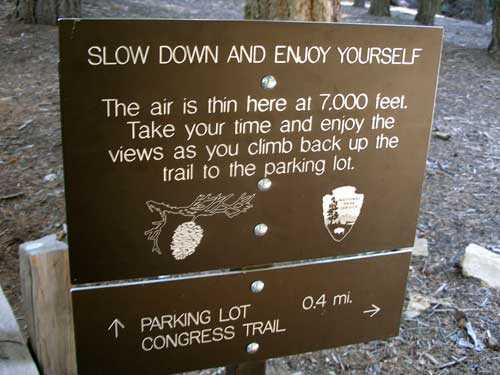

Lookin' rather small and insignificant there!

A beautiful forest, complete with small waterfalls



A tree crosses our path.


A Douglas Squirrel makes a lunch of a sequoia cone.

The aptly named Tunnel Log

Such shallow roots for such a huge tree!

The McKinley Tree... where the scale is even more ridiculous!

The General Lee
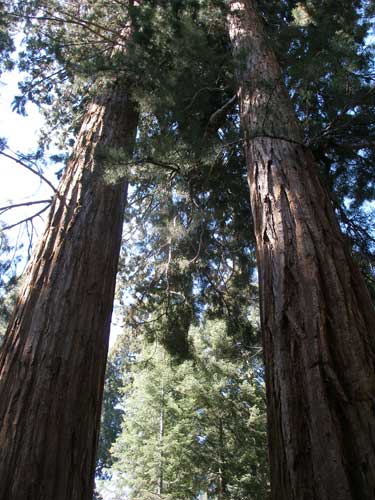
Big trunks...

... and even bigger bases!

The President
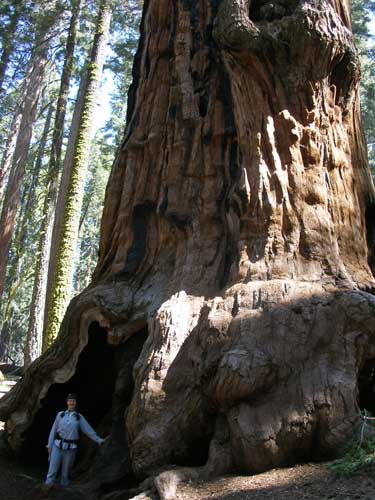
Chief Sequoyah tree
This is the guy these trees get their name from... maybe. Sequoyah was born in Tennessee sometime in the 1760's or early 1770's to a Virginia fur trader and the daughter of a Cherokee Chief. He worked as a silversmith but is famous for his creation of a Cherokee syllabary and teaching the people to read and write.
These trees were given their sequoia Latin name in 1847 by Austrian biologist Stephan Endlicher, who described many new plant genera. Endlicher never offered an explanation for the name, so it was later speculated that it must have been to honor this incredible American Indian linguist. However, another suggestion is that he may have been thinking of sequentia (Latin for "sequence") since the species is a follower of an ancient, extinct species... buuuuut.... Endlicher probably would not have had this kind of fossil knowledge... soooo.... perhaps he was talking about a different kind of sequence, perhaps on form or structure. Suffice to say, at this point, just choose the story you like best.
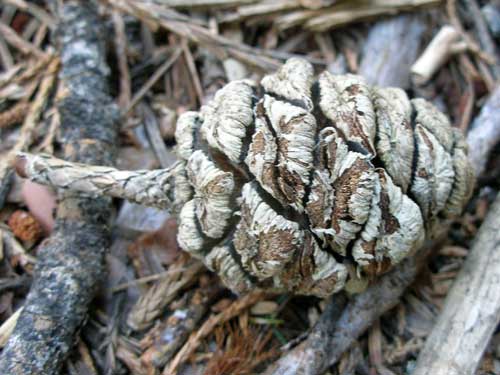
A sequoia cone
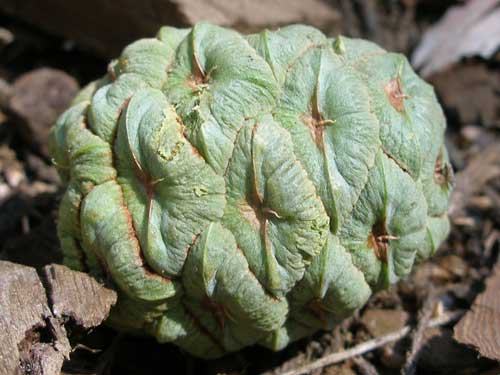
A green (immautre) cone. While the seeds mature in 18–20 months, the cone typically remains green and closed for up to 20 years. Some seeds are shed when the cone scales shrink during hot weather in late summer, but most are released when the cone dries from fire or is damaged by insects.

The Senate Group was an unusual cluster of smaller sequoias (size being relative to other sequoias ad certainly not to us!)



The roots of a fallen giant

The House Group was another series of same-sized trees

A Mule Deer wanders through the shot...

... casually crosses the trail, then disappears into the trees again.
return • continue

